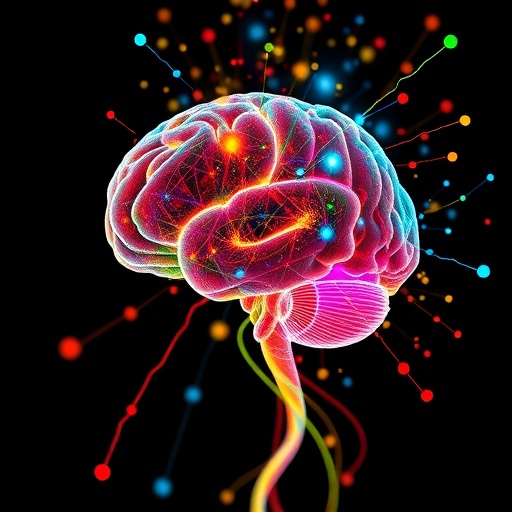The evolutionary journey that transformed ancestral hominins into modern Homo sapiens was shaped by numerous subtle molecular alterations, many of which remain shrouded in mystery. A groundbreaking study published in the Proceedings of the National Academy of Sciences (PNAS) unveils one such pivotal change involving the enzyme adenylosuccinate lyase (ADSL). This research, conducted jointly by scientists at the Okinawa Institute of Science and Technology (OIST) in Japan and the Max Planck Institute for Evolutionary Anthropology in Germany, illuminates how minute modifications in the structure and expression of ADSL could have influenced brain biochemistry and behavior, offering fresh insights into the underpinnings of what makes modern humans unique.
In vitro assays have demonstrated that this alanine-to-valine substitution impairs ADSL stability, but what remained unknown until now was whether this molecular nuance translates into tangible effects in vivo. Employing genetically engineered mouse models to mimic the human-specific mutation, researchers observed an accumulation of the enzyme’s substrate molecules, notably SAICAr and S-Ado, across multiple organs with a pronounced presence in the brain. These findings indicate that the mutation leads to a tangible decline in enzyme activity within living organisms, especially impacting cerebral metabolism.
.adsslot_NtPWmfq1ev{ width:728px !important; height:90px !important; }
@media (max-width:1199px) { .adsslot_NtPWmfq1ev{ width:468px !important; height:60px !important; } }
@media (max-width:767px) { .adsslot_NtPWmfq1ev{ width:320px !important; height:50px !important; } }
ADVERTISEMENT
The behavioral consequences of reduced ADSL activity presented an intriguing facet of the study. In an experimental paradigm designed to assess resource acquisition linked to sensory cues, female mice harboring the substitution exhibited a superior capacity to access water post-deprivation compared to their wild-type counterparts. This suggests that decreased ADSL activity might confer an evolutionary advantage by enhancing certain aspects of cognition or motivation, potentially enabling more efficient anticipation and competition for scarce resources.
Given that pathological ADSL deficiency in humans results in severe psychomotor impairments and cognitive deficits, this evolutionary fine-tuning of enzyme activity underscores a delicate balance. The observed mutation appears to down-regulate enzymatic function just enough to potentially enhance particular cognitive or behavioral traits without reaching pathological levels that cause disability. This nuanced modulation aligns with the hypothesis that evolutionary pressure acted to optimize enzyme function rather than abolish it outright.
Further exploration extended beyond protein-coding sequences to examine regulatory regions of the ADSL gene. Intriguingly, the researchers identified a cluster of nearly ubiquitous non-coding variants in modern human populations that further diminish ADSL expression, especially in neural tissues. Far from compensating for the destabilizing amino acid substitution, these regulatory changes amplify the reduction in enzyme activity. This two-pronged evolutionary adaptation—an alteration in both protein stability and gene expression—suggests positive selection favored a net downshift in ADSL function, highlighting a complex genetic choreography underlying human evolution.
The timing of these genetic changes offers additional evolutionary context. The amino acid substitution is absent in Neanderthal and Denisovan genomes but present in almost all modern humans, indicating the mutation arose after divergence from these lineages but prior to the out-of-Africa dispersal. This temporal window, approximately half a million years ago, corresponds to a crucial phase in hominin evolution when key cognitive and behavioral traits likely emerged.
A particularly fascinating aspect of the study lies in the sexually dimorphic behavioral effects observed in mice. Only female mutants exhibited enhanced competitive behaviors when seeking water rewards, a pattern that opens new avenues of inquiry into sex-specific neural circuitry and behavior. The multifaceted nature of such behaviors—encompassing sensory processing, associative learning, social dynamics, and motor coordination—implies that ADSL’s influence may extend across diverse brain regions and pathways.
Notably, the researchers caution against simplistic extrapolation from mouse models to human cognition due to vast interspecies differences in neural architecture. Nonetheless, these findings provide a valuable proxy to infer how molecular shifts might have shaped hominin brain function and behavior over evolutionary time scales. They also invite further investigation into the broader metabolic networks influenced by purine biosynthesis during brain development and function.
This study joins a growing body of work identifying rare but impactful enzymatic changes fixed in modern humans but absent in archaic relatives, positioning ADSL as a molecular lynchpin for cognitive evolution. It accentuates the role of metabolism—not just gene regulation or brain anatomy—in sculpting the human mind’s sophistication. Future research efforts aim to explore combinations of such genetic alterations to unravel the complex symphony of molecular evolution that forged the unique capacities of our species.
While the behavioral implications are compelling, the team emphasizes that the exact mechanisms linking diminished ADSL activity to enhanced performance remain obscure. Whether the advantages arise from altered neurotransmitter synthesis, energy metabolism, or other biochemical pathways remains an open question. Addressing these will require sophisticated neurobiological and behavioral experiments across various model organisms.
In sum, this innovative research underscores the profound impact of subtle molecular evolution on human brain function and behavior. By peeling back layers of our genetic past, it offers a rare glimpse into how minuscule biochemical shifts could have propelled modern humans toward new cognitive heights, setting us apart from our closest extinct cousins. As this field advances, it promises to deepen our understanding of human nature and the intricate labyrinth of evolutionary biology.
Subject of Research: Not applicable
Article Title: The activity and expression of adenylosuccinate lyase were reduced during modern human evolution, affecting brain and behavior
News Publication Date: 4-Aug-2025
Web References: Not provided
References: Ju et al., Proceedings of the National Academy of Sciences, DOI: 10.1073/pnas.2508540122
Image Credits: Ju et al., 2025
Keywords: adenylosuccinate lyase, ADSL, human evolution, purine biosynthesis, enzyme activity, brain metabolism, behavior, evolutionary genetics, Neanderthals, Denisovans
Tags: adenylosuccinate lyase enzyme functionbrain biochemistry and human uniquenessevolutionary anthropology research findingsevolutionary changes in brain chemistryhuman evolutionary biologyimpact of enzyme stability on behaviorinterdisciplinary study of evolution and biochemistrymetabolic enzymes in human evolutionmolecular alterations in modern humansNeanderthal and Denisovan geneticspurine biosynthesis and brain behaviorsignificance of amino acid substitutions





